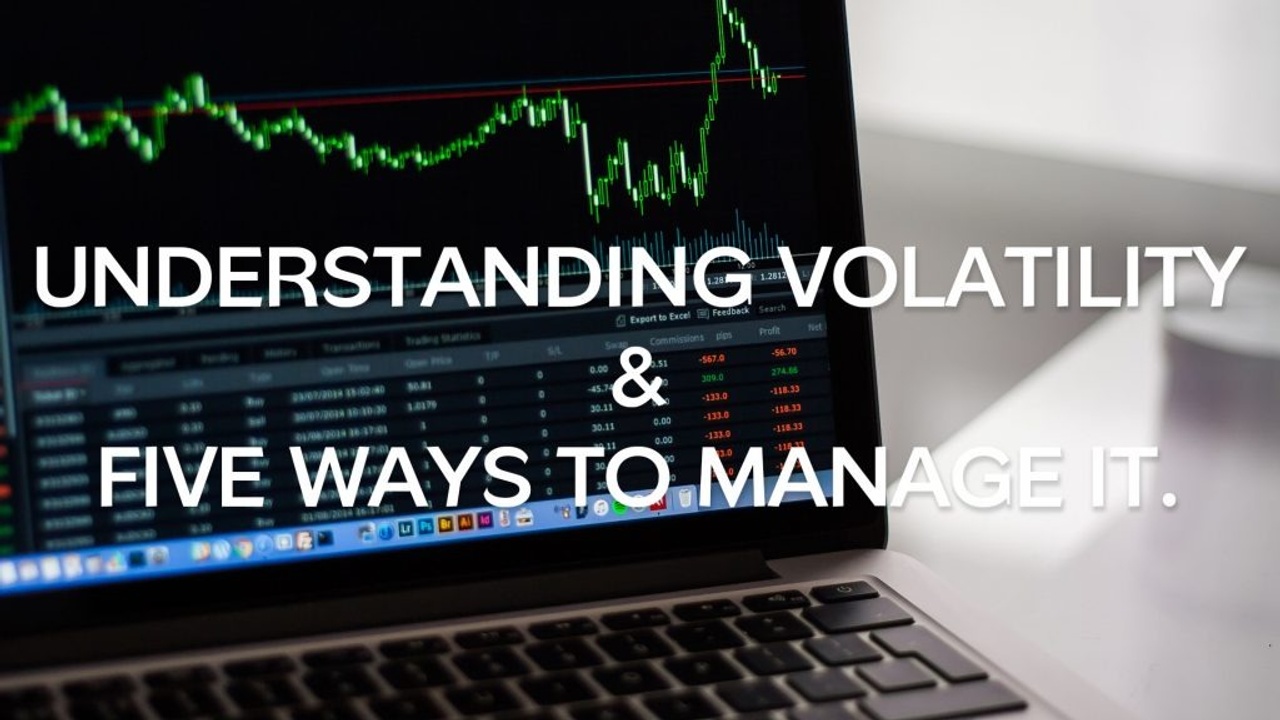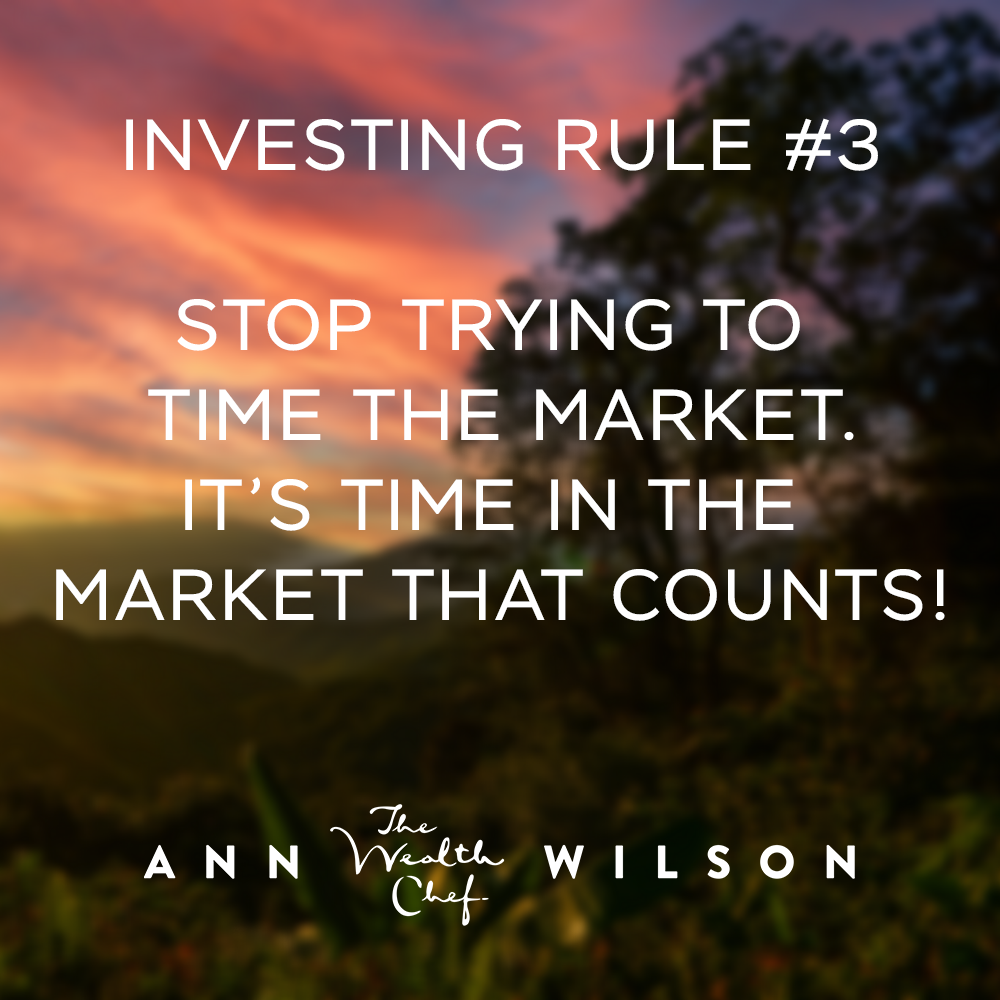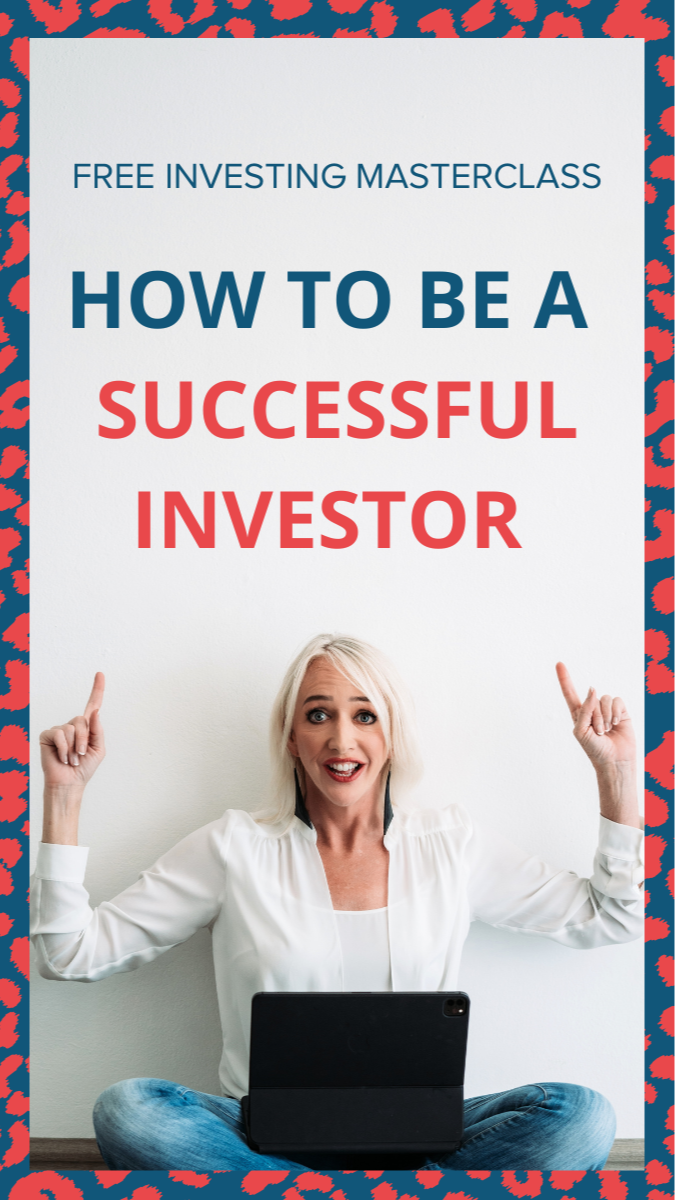
Understanding Volatility and 5 Ways To Manage It
We need to talk.
Specifically we need to talk about this thing called volatility.
It's something that people get very afraid of encountering along their investing journey.
It makes me think of the troll living under the bridge in the story of Billy Goat Gruff, singing his song – “I’m a troll, fo-di-roll, and I’ll eat you for my supper” – and preventing the goats from getting to the juicy grass on the other side.
The truth is, volatility is not scary at all, it’s not dangerous, and it most certainly won’t eat you for supper. But if you don’t understand it and believe it is scary, your fear and ignorance could be the things that keep you away from your juicy fields of grass.
Understanding volatility, knowing what it is and how you can manage it and deal with it is what this video is all about. Watch it now.
Volatility is about ups and downs. Think of it like the market’s mood swings.
Simply put, volatility is the rate of change of the price of an asset.
When we talk about volatility, most people immediately think about the stock market or equity investing. This is because equity investing is one of the most liquid ways you can invest and the price feedback from the market happens almost instantaneously – thanks to the internet – so it can feel like there are very dramatic and wild price swings.
You also have volatility in the property market. You have volatility in businesses. You have volatility in every market. As soon as there is something to sell and something to buy, there will be price variations.
With property, businesses and other asset classes, because it's way more difficult to get a moment-by-moment valuation, people tend to worry less about the price volatility, or ups and downs, of those asset classes.
Volatility is also sometimes referred to as investment risk. The bigger the potential rate of change of the price – and the bigger the price range of an asset – the greater the volatility, the bigger the “risk”. This is because volatility makes assets less predictable.
So with all assets, the price goes up… the price goes down… the price goes up… the price goes down. How fast the price changes and the extent of the change is known gives you the volatility index for any asset or asset class.
There is one BIG volatility index which measures how the overall market, across major indexes, is changing – ie, whether prices are moving fast and in big swing ranges across all (or most) sectors of the market, or whether they are changing slowly and within a smaller range.
This BIG MAMMA volatility index is called the VIX.
Its full name is the Chicago Board Options Exchange Volatility Index. It is a measure of the stock market's expectation of volatility implied by S&P 500 index options.
Cutting through the jargon (yep, another one for the Jargon Buster).
This index is put out by the Chicago Board Options Exchange to give us a sense of how “up and down” the market is and whether the volatility is increasing or decreasing.
Historic volatility also tells us some stories that may be useful predictors of the future. For example, in the past when we’ve entered a bear market (down-trending asset prices) and everything has gone down steadily, overall volatility has tended to be quite small – because it's a one-way direction… down! Similarly, in a strong bull market (when prices are going) the volatility index levels can be small – again, because it's a one-way direction.
A high VIX (high volatility) happens when the market can’t make up its mind whether it wants to be a bull or a bear – so it goes up and down and up and down and does a lot of sideways movement without really establishing a trend.
A high VIX can indicate a transition between a bull and a bear market – although sometimes we also have quite long periods of sideways movement. Bigger volatility also comes about when there are periods of uncertainty – especially political uncertainty and socio-economic uncertainty.
In the middle of the first quarter of 2020, for example – when the Coronavirus pandemic hit the headlines – equity markets plunged (after a big rise in 2019). But in the second quarter of 2020 they shot up again! These huge up-and-down movements within a relatively short space of time (by market standards) sent the VIX through the roof. And that scared a lot of people into staying out of the market – which proved to be a big mistake.
What happens when volatility increases?
People who don't understand it end up sitting on the sidelines – which is where you NEVER want to be.
Remember –

Time and time again I get people saying to me –
❝ Ann, prices are crazy – high, then low – I'm afraid of
investing right now, I’ll just sit on the sideline and wait. ❞
That's the worst thing we can do. Not being in the market is super dangerous, because then we don't have assets working for us.
And I get it – it can be a bit frightening when we look at the prices going up and down.
How do we deal with volatility?
The very first thing to do is… DON’T PANIC.
Understand that volatility is absolutely normal.
Prices of stocks in markets all around the world go up and down for two primary reasons.
REASON #1 – Fundamentals. Prices can go up and down because of “fundamental” changes in an underlying stock or sector. Maybe a certain asset class has shifted (eg, commodity shortages), or maybe something has happened to a specific market sector that makes businesses in that sector less profitable (like electric cars shaking up the auto industry).
REASON #2 – Emotions. Greed and panic. These emotions have a far greater impact on volatility than fundamentals.
The market is a moody old thing.
Like a grumpy old man!
Yes, us humans love to think we are logical beings when, in fact, we are driven by our emotions.
Things happen out there, the news gets all hyped up… and the market reacts. It's got a very low EQ!
So there you have it – volatility is completely normal.
In any trend, be it a bull trend, be it a bear trend, there's always volatility.
There are micro-movements happening all the time – second by second, minute by minute, day by day, week by week – but over longer periods of time it all dampens out.
It’s all about perspective, about remembering we are here for long term sustainable wealth. We are here to own quality assets and have them working for us. We don't give a damn about the minute-by-minute changes.
If you feel yourself getting caught up in the emotional swirl, here’s what you do.
The first thing is to remind yourself you're interested in the longer-term trajectory, not the moment-by-moment movements – don't panic, get on with your life, and remember that volatility is completely normal.
The second thing is to assess the truth of the situation and remind yourself WHY you are investing. Have a good intimate conversation with yourself… “I'm creating my financial wellbeing, I understand I need assets working for me. The stock market, investment property, low input businesses – these are the assets I need working for me. Okay, so nothing has changed regarding why I’m doing what I’m doing. What is my strategy that I'm following? Am I investing in low cost index trackers? Am I managing the things that I can manage? Yes, I am. Great, can I manage the emotions of the market? No, I can't. So let me come back to what is in my control – my emotions.”
Most of the strategies I teach are about consistent,
regular investing – and these strategies do not change
because of short term adjustments in the market.
The third thing we do to deal with volatility is we buy quality. When we buy quality assets we don't really care what's happening with the micro-movements. And the easiest way to buy quality is to own the best of the stock market via Index Trackers.
So why is buying the index the “quality move”
and the best way to manage volatility?
Here’s an example. Say your core home market index tracker in your portfolio is the FTSE 100. This means – with this particular investment – that with just one instrument you are buying shares in the top 100 companies listed on the London Stock exchange. Now if a sector of the market shifts fundamentally – say, we've gone from petrol cars to electric cars and nobody is buying petrol cars anymore – all of your petrol car companies listed on the exchange that are in the index tracker fund are going to lose value and drop out of the and the electric car companies that are replacing them are going to come into the index.
This means that you don't have to identify and chase after those new rising star companies because natural market forces will ensure that the companies that are no longer performing will drop away and the emerging companies that are growing, that have sustainable businesses, will come into the index.
So buying the index via a tracker in your portfolio means you're always getting more exposure to the top companies and less exposure to those that are no longer performing – it’s a complicated area of stock picking that you don't have to worry about.
The fourth thing to do to manage volatility is to spread the risk – in other words, spread the volatility. Remember we spoke about this word risk being so misunderstood. Risk just means volatility. The rate of change in the share price over time. In any moment the value of your investment can go up and down. So you spread the volatility (and thereby minimise it within your overall portfolio) by using two core investing principles. The first principle is diversification and the second principle is asset allocation.
Diversification means you don’t want just one egg – and you don’t want all your eggs to be in one basket.
Let's say you've got a basket of duck eggs. You want more than one duck egg.
So let's say duck eggs are your equities, these are shares in businesses. You want to make sure you have shares in a whole lot of businesses. The worst thing you do is have just two or three (or even 10) shares) in related sectors or industries. That would be risky. What you want is a basket of a whole lot of different shares – and that's why index tracking investing is so cool.
By investing in a single index tracker, let's say an S&P 500 index tracker fund, a single transaction automatically gives you diversification – because with that one investment you own shares in the top 500 companies listed in the US.
That’s diversification within one asset class.
You want diversification in every asset class. Say you have a collection of investment properties. Let's call that your chicken eggs.
Once again you want diversification within this asset class – you never just want one investment – or all your property to be very similar and in the same location. That’s risky business.
If you're going to invest directly in property, it’s way better to have a whole lot of smaller units rather than one big property. You can also get diversification across your property asset class by investing in real estate investment trusts – or better yet, an index tracker that tracks a whole bundle of real estate investment trusts so that you get investment property in retail, in commercial, in industrial and in different regions and countries.
You want diversification within each asset class.
This is how you manage volatility. If something happens in one sector – or one market, or one geographic region – it doesn't matter too much because you've got exposure in others. Diversification dampens down the big ups and downs.
The second investment principle to use to manage volatility is asset allocation.
You don’t just want lots of different kinds of eggs,
you also want your eggs in a bunch of different baskets.
Having different types of eggs is diversification, and having several baskets is asset allocation. You want to be investing in equities, investment property, low input businesses, loan instruments, commodities, gold, cryptos, etc – because every asset class goes through different cycles and has different ranges of volatility.
When you are invested in different asset types (or asset classes), these different volatility cycles dampen each other and you get this nice stability and constant growth in your asset portfolio.
The fifth way to deal with volatility is by regular investing. This is my favourite way and something so many people get wrong. You need to make a habit of regularly investing in assets. The easiest asset class to do this with is stock market investments, in these things called index trackers.
When you set aside a fixed amount of money every month to buy shares or units in your chosen index trackers, you keep buying regardless of what the market does. When prices are going you get fewer shares for your money that month – but your portfolio is worth more. When prices are going down, you celebrate because your quality assets are on sale – you get more for your money.
When the market is down you get more for your money.
So don’t worry about market slumps. For the same amount of money you get more shares in that specific index tracker fund – whether it's in a unit trust or an ETF makes no difference, you get more for your money.
Over time, the average number of units that you buy for that fixed investment balances out and you actually get a lower average cost per unit or share.
This is another reason why regular investing is so sexy – it averages your cost and reduces your volatility.
Drop me an email at [email protected] and share with me:
I’d love to know what have you learnt about volatility
and which of these five things can you apply in your life,
right now, to deal with the anxiety generated by volatility?
Remember, assets and money are here to serve you – not enslave you. They are meant to support you in living your greatest, juiciest life – so learn about them and learn how to give your money and assets great leadership – so they can do what they are meant to do.


